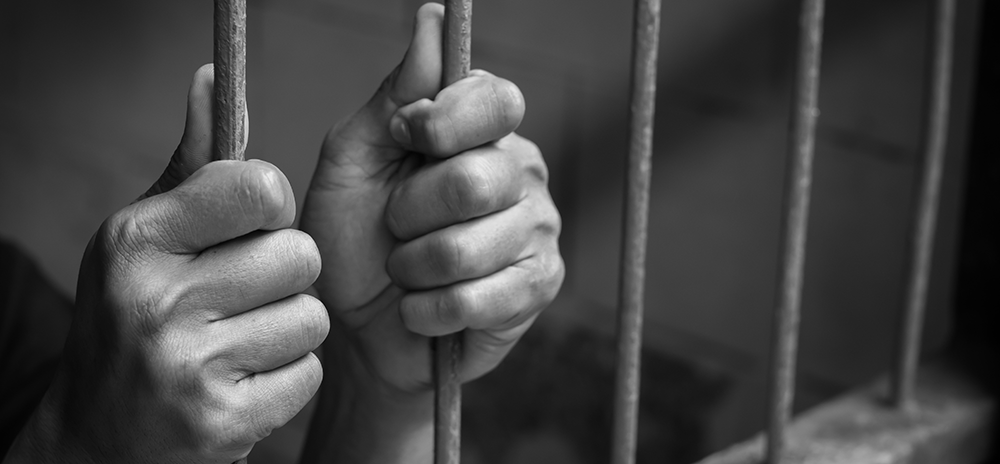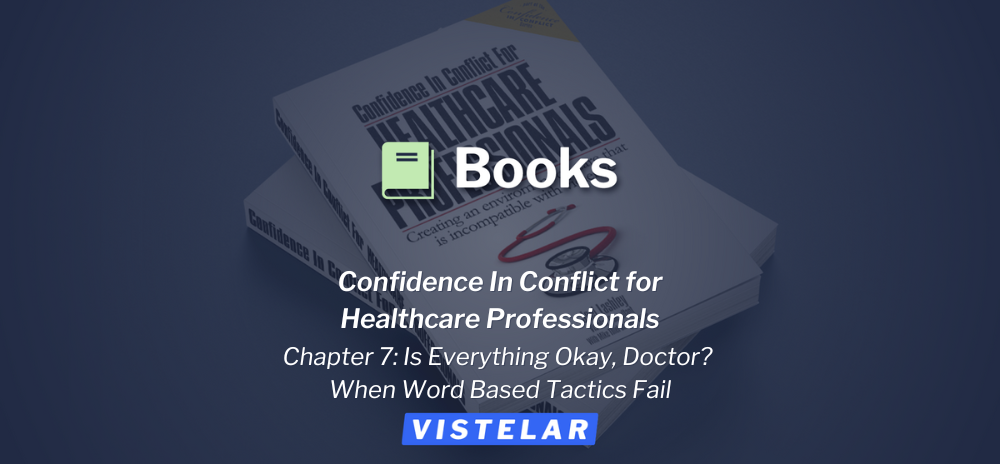The challenges of providing care and even for the basic human needs of mentally ill and cognitively disabled people are nothing new. Nor are the many well-meaning attempts to address this difficult and multifaceted problem. Still, in the present age of staggering advances in technology, medicine, physics, and a renewed exploration of space, we are struggling for answers about how best to manage the needs of our most vulnerable fellow citizens. We are hard-pressed to see any advancement at all.
Startling Statistics
The evidence is conclusive that some degenerative diseases are growing in prevalence, such as age-related dementia, Alzheimer’s, Huntington’s disease, and likely others. Additionally, the birth rates continue to rise for some neurocognitive disorders, such as autism. Sadly, both forms of brain-based disorders are expected to grow continuously into the foreseeable future.
Mental illnesses, such as depression and anxiety disorders, seem to be growing too. There has been a sharp increase in the suicide rate for Americans over the past couple of decades that is nothing short of frightening. According to the National Institute of Health Statistics, suicide rates between the years 2000 and 2016 increased by a staggering 30%. Overall, the rising suicide rate represents a 21% increase among males and a massive 50% increase among females.
During the COVID-19 pandemic, the murder rate has spiked dramatically. But even before that, Americans have seen mass murders and active shooter events become almost commonplace. As we study these events, we have repeatedly seen tragic pictures of possible lost opportunities for intervention, which begs the question of some of those tragedies could have been averted if more people were familiar with the signs of emotional crises and treatment was more available and accessible.
The evidence is mounting that we not only need more resources in infrastructure and medical professionals, but more effective training for first responders, corrections officers, youth workers, nurses, teachers, and perhaps everyone else who works not only with the mentally ill and cognitively challenged but with the public at large.
The largest institutions for the Mentally Ill
Today, the largest institution in America for the treatment of mentally ill people is the Los Angeles County Jail, followed by jails in New York and Chicago. How is it that we wound up housing our mentally ill and cognitively disabled people in jails? Is it just a fact of life that mentally ill and cognitively challenged people commit more crimes than healthy and neurotypical people, so they end up in jail? …Or is the answer more complex?
It’s not hard to picture a time in human history when mentally ill, cognitively challenged, and homeless people were thrown into medieval dungeons, along with society’s debtors, petty criminals, and felons.
But certainly, we’ve matured as a species and grown beyond such barbarism.
There are no more debtor’s prisons and homelessness is no longer treated as a crime. But what about the mentally ill and cognitively challenged people who lack opportunities for treatment, housing, and employment? Is the collision course between mental illness and criminality truly inevitable? Before we can answer those questions, we might need to look back at how we’ve housed and treated the mentally ill in the past, from the middle of the modern age in America until today.
Phase One: The Separation of Prisons and Mental Health Facilities
1841, East Cambridge, Massachusetts. A young woman and professional teacher in poor general health volunteered to teach Sunday School at the local jail. Dorothea Dix was already a woman of notable reputation, having published a couple of books and starting a local school for the education of children.
volunteered to teach Sunday School at the local jail. Dorothea Dix was already a woman of notable reputation, having published a couple of books and starting a local school for the education of children.
However, despite her chronically poor health, what Dorothea Dix would see behind those jail walls would change her profoundly and cause her to become a champion for people with mental illness, a prison reformer, an innovator in nursing and hospital administration, an influencer in the treatment of battlefield casualties and veterans, and one of the most influential women of her time.
Long before the Civil War, incarceration and mental illness seemed to go hand-in-hand. Also at the time, the average citizen and lawmaker alike had no idea what life was like in jails and prisons, nor did they care. Society’s inmates were dismissed as law-breakers, deserving of what they got and the conditions in which they lived.
A woman of great passion and abilities, Dorothea would quickly find an audience for her crusade, even though she lived in a time when women were largely ignored. She would begin by visiting other jails and prisons in cities throughout New England, where she saw many of the same conditions that she had witnessed in East Cambridge.
Immediately she set out to study the meager literature and science of the time regarding psychology and the treatment of mental illness. She interviewed some of the appallingly few practicing psychiatrists and other experts in New England to build her understanding. Soon she was ready to bring the accounting of her findings to the legislature of Massachusetts.
What she reported was a system in which people with mental illness and society’s criminals were housed in the same place at the same, or worse, conditions. She reported on conditions nothing short of that imagined to have existed in medieval dungeons, where both patients and prisoners, especially women and inmates with mental illness, were routinely tortured, chained, sexually abused, malnourished, and left in squalor without even basic sanitation.
As a result of her report, she would go on to begin a movement that would lead directly to the proper institutionalization and treatment of people with mental illness in America, and the reform of American prisons and jails. In her lifetime, her movement would extend to Canada, Europe, and beyond. Many would consider Dorothea Dix’s work to be the first historically significant phase of the development of mental health treatment and prison reform.
Seemingly she had done it. Institutions were being built and clinicians were being trained to humanely treat and care for people with mental illness, and jails were being cleaned up and new ones built. Laws were passed for the humane treatment and housing of prisoners and professional jailers were being hired and trained. Certainly, we would never return to those barbaric days when the only place for mentally ill and cognitively challenged people were prisons and jails.
Phase Two: The Recombining of Prisons and Mental Health Facilities
Fast-forward 120 years.
1961, Washington, DC. A US Congressional Commission was appointed in 1955 to study concerns about the state of mental health in America and published its findings. Even after the recent development of Thorazine, the first successful drug for treating symptoms of psychosis, there were sweeping concerns among lawmakers regarding the state of mental health in America.
The Commission reported on a poor state of mental health in America, where well over half a million people were known to suffer from serious and significant mental illness (note: in 1961 the population of America was roughly half what it is today). The study also estimated that 1 in 5 Americans suffered from some form of mental illness, most of whom had not been identified. Treatment options were also woefully lacking, under-researched, and underfunded, meaning there were not enough psychiatrists, effective treatments, or treatment centers.
As a result of the Commission’s findings, and a general movement for mental health care reform fueled by popular culture, President John F. Kennedy signed the Community Health Centers Act, providing funding to build between 1,500 and 2,500 neighborhood mental health treatment centers, so that people with serious mental illnesses could remain in their communities near their families and support systems.
Then in 1965, US Attorney General Robert F. Kennedy visited the infamous Willowbrook Institution, then the nation’s largest facility for people with developmental disabilities, housing people with intellectual disability, autism, dementia, traumatic brain injury, and other brain-based disorders. Woefully underfunded, the sweeping facility built to house 4,000 people with cognitive challenges was forced to make room for 6,000.
After his visit, RFK reported conditions there as being like “The Snake Pit,” referencing a 1948 film about the abuse of patients in a mental institution. Robert Kennedy denounced Willowbrook for its squalid conditions, overcrowding, and neglect of its residents.
In the same year of RFK’s visit to Willowbrook, JFK’s former Vice President and successor, Lyndon Johnson, excluded mental health considerations from his Great Society legislation, effectively ending federal funding for mental health treatment, before the concrete had even dried in the foundations of John F. Kennedy’s new community health centers.
By extension, an involuntary commitment was viewed as being tantamount to imprisonment, so the practice should therefore be eliminated or drastically curtailed. Also, Americans still didn’t care much for what they saw as the institutional abuses of psychiatry, after movies like “The Snake Pit” and popular novels like One Flew Over the Cuckoo’s Nest, published in 1962.
So in 1967, amid enthusiastic and majority support from voters and lawmakers, both Democrats and Republicans alike, California Gov. Ronald Reagan signed the bi-partisan Lanterman-Petris-Short Act, which severely limited the ability to involuntarily commit people with mental illness for treatment. The legislation was lauded by all as a triumph of liberty and personal freedom for Californians.
Therefore, since the need for institutional psychiatry in California would be theoretically reduced, state funding for mental health in California was slashed. Now, in California, there was no more federal or state money for the treatment of the mentally ill. The damage that resulted didn’t take long to reveal itself. In only one year, the number of people involved in the California criminal justice system doubled! People were quickly moved out of mental health facilities and back into jails and prisons.
In that same year, mental health treatment increased dramatically at California’s unprepared emergency rooms, where residual federal funding through Medicare and charitable donations would pay for some, and privately insured patients in hospitals would pay for others through increased premiums and hospital fees.
At the same time, the final death knell for mental health facilities had arrived and you could hear institutions and psychiatric hospitals–good and bad–being boarded up all across America. Even JFK’s neighborhood centers for people with cognitive challenges and mental illness (which had begun only four years earlier and totaled only a few hundred), were eventually all boarded up too.
The final results were essentially no savings for the California taxpayer, an exploding prison population, and a general decimation of mental health treatment in the state. You might have thought that this transition would have been viewed as a failure; however, many other states quickly followed California’s example.
Without thinking about the consequences and with all good intentions, America had closed the institutions that Dorothea Dix had dreamed of to treat people with mental illness, restore their dignity, and give them and their loved ones hope for the future. And we closed them all without having a plan B for all those people who desperately needed treatment and support.
But still, one institution hung on for dear life: Willowbrook. After all, no one envisioned closing every place where the mentally ill or cognitively disabled were housed and cared for. However, in 1972, came a shattering exposé on the state of mental institutions in America, when a young reporter named Geraldo Rivera gained new fame, winning a Peabody Award for breaking into the Willowbrook Institution and capturing all those horrors RFK had mentioned during his visit seven years earlier.
Soon, the report hit televisions across America showing patients with cognitive disabilities crowded together, many naked, neglected, and left unattended to languish in filth. Americans were righteously and unanimously outraged and demanded action from their lawmakers.
The final blow perhaps was the debut of the film, “One Flew Over the Cuckoo’s Nest,” for which Jack Nicholson won an Oscar. Popular opinion was now ready to hand down its final verdict, that mental health hospitals are bad–always bad–and we are better off without them.
So, in the end, the mental health reforms of Dorothea Dix were largely left in ashes. Prison reform became an impossible dream and the homeless population in America exploded. Finally, the suicide rate increased until it doubled the homicide rate, in a country already gripped by the fear of violence. Just wait, it gets worse.
Phase Three: The Mental Health Tsunami
In 2008, I attended a Law Enforcement training seminar in Chicago on the topic of autism and policing, at a time when diagnoses of autism had exploded across America. People were not only seeking answers as to why more children were being born with autism, but they were also seeking accountability, regarding many high-profile incidents involving interactions with police officers and people on the autism spectrum.
The seminar was taught, in part, by Dr. Stephen Shore, a professor of Special Education at Adelphi University, in New York state. Dr. Shore is a prolific author, talented musician, and internationally recognized expert on the subject of autism, in part no doubt, because Dr. Shore has autism himself.
During the seminar, Dr. Shore described the explosion of diagnoses of autism as a “tsunami,” like a massive wave of children being born on the spectrum, now coming of age. And as they aged into adulthood, he was concerned that many of them needed resources to meet their needs–resources that currently didn’t exist.
After attending the seminar, I wrote an article called The Autism Tsunami, about the wave of adults with autism that was beginning to crest, and the challenges it represented to policing. The many responses I received to the article from people with autism, parents, and serving police officers about their concerns, challenges, failures, and many successes were overwhelming.
Back in 1961, when the system started by Dorothea Dix began to break down, Dr. Shore, and myself incidentally, were born. Most of Dr. Shore’s contemporaries with a similar level of disability probably would have been institutionalized. Initially, Dr. Shore’s parents were told their son would never live outside the walls of an institution. Dr. Shore credits his parents’ patience and persistence in wanting more for their son, allowing him to beat the odds.
Dr. Shore not only beat the odds, he moved the scale, by not only surviving independently but by excelling. If you were to dismiss Dr. Shore and those like him as anomalies or savants, you would do both them and their parents a disservice by failing to recognize their profound effort, family values, and strength of character.
I know from first-hand experience about the challenges involving raising children with neurocognitive disabilities, having a son with autism and other disabilities, who was also not expected to ever live independently. Like Dr. Shore’s parents, we were told that one day our son, Colin, would have to be “institutionalized.” The word itself was terrifying to us as parents.
But like Dr. Shore, Colin has also beaten the odds by surpassing milestones once thought to be out of his reach. He learned to speak and read. He also learned to control his meltdown behaviors when he is agitated or confronted–an example many people without neurocognitive challenges might consider following. Colin also lives on his own and not in an institution.
Usually, through simple observation and his own careful and methodical process, he learned to cross a street, go into a restaurant and order a meal, buy groceries, control his spending and other impulses, and other things we were told never to expect. Even though Colin was born in 1985, there was no special curriculum for children with autism in our local school system. Also, there was no Applied Behavior Analysis (ABA) therapy available for him, specialized care, or any other meaningful programming, because he was born nearer the beginning of Dr. Shore’s “autism tsunami.”
However, Colin did have the benefit of something others with similar challenges may not. He had a family who loved and tenaciously cared for him, and access to basic neurological and psychiatric care. These are things that no one can take for granted.
It was, of course, a good thing that Colin exceeded everyone’s expectations because if he hadn’t he would be left with what has become a grim alternative of institutionalization. But even the institutions themselves have largely disappeared, so perhaps he might have had even worse choices, such as prison or the street.
Early studies already revealed that people on the autism spectrum are seven times more likely to encounter the police, usually for non-criminal things such as wandering, unsafe or odd behavior, emotional meltdowns, and other things related directly to their disability. But when you crunch the numbers, even more, recent studies suggest that the population of people with autism in prison is much higher than found in the general population.
Gary Klugiewicz, a co-founder of Vistelar and formerly a member of the Milwaukee County Sheriff’s Office, spent several years working with inmates with mental illness and cognitive challenges. His career at Milwaukee County began in 1976 when he started as a corrections officer and he retired as a Captain in 2001. Gary proudly recalled his experience running the Special Management Team within the Milwaukee County Correctional system for this article, in the following paragraphs. 
“50 years ago, a decision was made to close many state-run mental health hospitals and replace them with community-based mental health facilities. Unfortunately, these community-based mental health facilities ended up being county jails. This is why the Milwaukee County Jail became the largest mental health facility in Wisconsin when I worked there.
At that time we often had 300 inmates on psychotropic meds. These inmates were cared for by a Special Management Team (SMT) that consisted of specially trained deputies, psychiatric social workers, and a psychiatrist. Valerie Ranft, the mental health manager, and I had the privilege of leading this truly remarkable group of people. These professionals exemplified the Vistelar guiding principle of treating people with dignity by showing them respect, even under the most difficult and extreme situations.”
Gary went on to say that his time in charge of the SMT was the proudest time of his police career, and with good reason. He and the SMT proved that they could enforce the law, supervise incarcerated persons, and provide meaningful treatment for people who needed it.
Gary and his deputies not only received the best training for paraprofessional psychiatric support workers available to them, but Gary and his social work counterpart sought out psychiatric professionals and innovators to develop the best possible approaches for the institutional treatment of people with mental illness. So when those institutions closed and their patients went to jail, they didn’t have to fall between the cracks. Later, thousands of people, including corrections officers, police officers, nurses, psychiatric workers, educators, youth workers, myself, and others would be privileged to learn from and train with him.
More Startling Statistics
As recent as 2012, a study of 431 inmates revealed that 4.4% of them had autism. That’s double the already massive numbers found in the general population. A US Bureau of Statistics survey conducted in 2011 suggests that the problem may be even more serious when accounting for people with neurocognitive disorders in general. The survey estimated that a full 30% of women and 19% of men incarcerated have a cognitive disability.
Now, why is it that 3 out of 10 women and 1 out 5 men in American prisons are thought to have a neurocognitive disorder such as autism, intellectual disability, dementia, traumatic brain injury, or other brain-based disorder? Is it because people with cognitive disabilities are bad people who commit more crimes? Or is it because they don’t realize what they are doing is criminal? Or are they perhaps left with fewer choices in life?
Fast forward, America, 2021. 180 years after Dorothea Dix first visited a Jail. Here is the state of mental health in America today. In 2018, 11.4 million Americans experienced a serious mental illness. The issue is so enormous that it costs nearly 200 billion dollars in lost earnings annually.
Only 2 out of 3 Americans with a mental illness who were studied received any treatment. 1 in 7 of that group wasn’t treated due to a lack of insurance, but many others were not treated simply because it wasn’t available! There wasn’t any practical access even to fundamental resources, such as providers, inpatient treatment facilities, or outpatient clinics. In fact, over half of the counties in America don’t have even a single solitary practicing psychiatrist! So where do they turn?
To this day, emergency rooms absorb around 12 million mental health emergency visits a year. Visits that are not only enormously costly but largely ineffective, due to treatment by physicians who are undertrained and unprepared to manage their patient’s mental health needs.
In the final analysis, people with mental health disorders and cognitive disabilities have largely returned to the jails, prisons, and the gutter, comprising a full 40% of prison inmates and a full 20% of people who are homeless. Another 40% of all Veterans Affairs patients have a mental health disorder. And things are not going to get better. In fact, they are getting worse.
Already, 1 in 20 adults and 1 in 6 kids will experience a serious mental illness annually and suicide is the second leading cause of death for people between the ages of 10 and 34. The number of people living with neurocognitive disorders, such as autism, dementia, and Alzheimer’s is still rising. For instance, deaths from Alzheimer’s disease since the year 2000 have increased 145%! Already more than six million people are living with Alzheimer’s in the US, and that number is expected to double sometime before 2050.
Before COVID-19 was even a virus to worry about, the prevalence of mental illness was increasing. Between 2017 and 2018, the number of people experiencing mental illness increased by a full 1.5 million people. Now, during the pandemic and even into the projected post-COVID era, mental health issues are expected to surge even beyond the current state of alarming growth.
Even with all that understood, there are no new significant plans for community mental health centers or psychiatric hospitals. So it seems the need to train emergency department staff, family practice physicians, police officers, corrections officers, and hospital security staff in the safe care and humane treatment of people with mental illness is not going to go away anytime soon. Nor should it.
To really do this right, everyone needs to be trained and new resources need to be developed. There is nothing fiscally efficient or medically sound about housing our friends, neighbors, loved ones, and fellow citizens affected by mental illness and cognitive challenges in prisons and jails, inadequate and understaffed institutions, or by leaving them on the street. It is also not good enough for a civilization truly interested in equality, justice, and human rights.
Dorothea Dix’s intentions nearly two centuries ago were to build mental healthcare institutions and hospitals for the treatment of people with mental illness. Also, to develop treatments and provide training for providers and staff working with people who are experiencing mental illness. And finally, to reform prisons and jails because people should be treated humanely no matter who they are.
If only Dorothea Dix could see us now.









